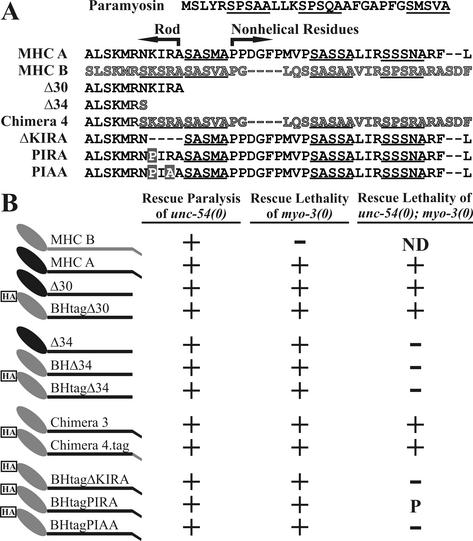Figure 1.
Truncated constructs define a small region of predicted coiled coil that is essential for viability. (A) Top line shows the N-terminal nonhelical peptide in paramyosin that is phosphorylated by an endogenous kinase (see INTRODUCTION). The proposed phosphorylation motif S_S_A is underlined. The C termini of full-length MHC A (black) and MHC B (gray) are shown as aligned by the program Megalign, with the C termini of mutant and chimeric constructs shown below. The number of C-terminal residues removed in each construct follows the delta (Δ) symbol. Those residues designated as nonhelical score p = 0 in paircoil (Berger et al., 1995), and those designated as rod score p = 1.0. The Δ34 constructs contain unc-54 (MHC B) sequences that result in the presence of a single MHC B amino acid residue at the C terminus (see MATERIALS AND METHODS). Amino acid residues changed by missense mutation are marked by a shaded rectangle. (B) Constructs were tested for the ability to rescue single mutant animals lacking one MHC isoform, and for the ability to rescue double mutant animals lacking both isoforms. Schematic drawings of the myosin constructs (left) show MHC A residues in black and MHC B residues in gray. The oval represents the head domain, the thick line represents the coiled-coil rod, and the small angled C-terminal box represents the tailpiece. BH denotes the presence of the MHC B head, and the boxed HA label or “tag” indicates the addition of the hemagglutinin epitope. Some of the single mutant data have been published (Hoppe and Waterston, 1996). ND, not done; P, partial rescue.

